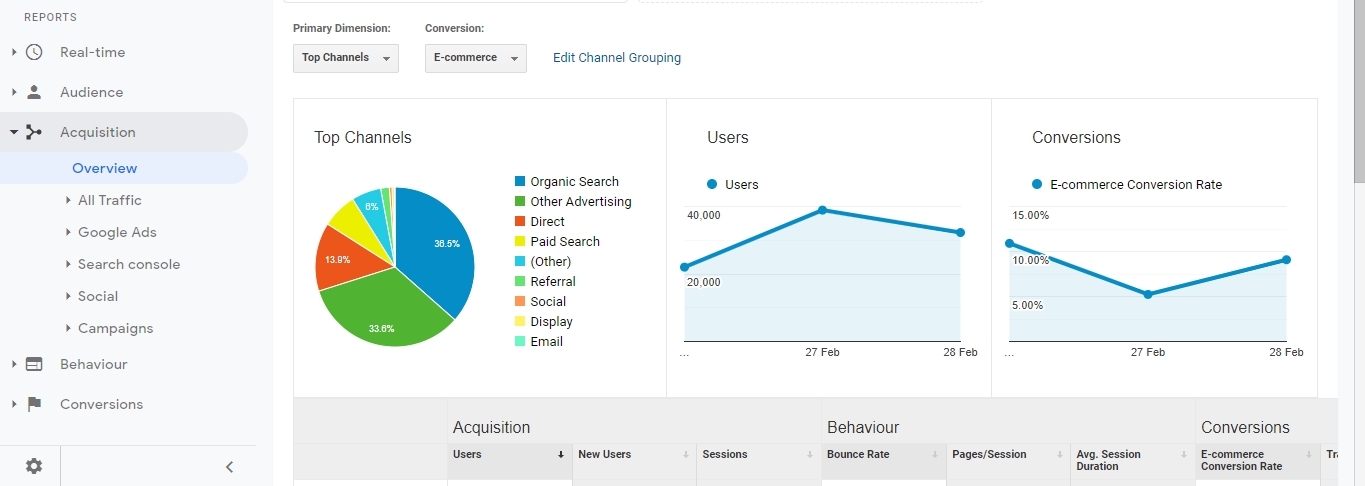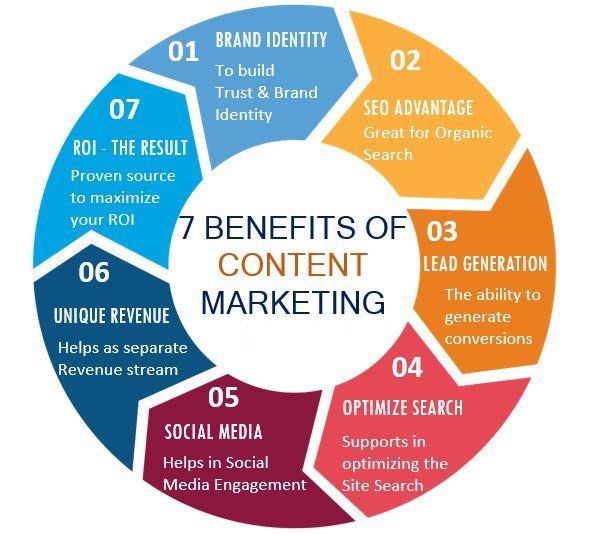How to Improve Your B2C Lead Generation Strategies
Regardless of the industry, your business is operating in, it depends greatly on one thing only – customers. If you fail to attract new ones, your business would eventually die as it can’t prosper on loyalty and returning customers alone. This is where personalized lead generation kicks in. That means persuading someone that your service […]

Regardless of the industry, your business is operating in, it depends greatly on one thing only – customers. If you fail to attract new ones, your business would eventually die as it can’t prosper on loyalty and returning customers alone.
This is where personalized lead generation kicks in. That means persuading someone that your service is the exact same thing they need and have been looking for.
Compared to the typical B2B approach, most B2C lead generation strategies offer a much shorter sales cycle. B2B requires several decision-makers to act and analyze a certain service before choosing to use it or not, whereas B2C purchases are often based on intuition or emotions.
What are the best practices in exploiting these two in order to convert higher? Let’s check the leading strategies.
#1 Your website is your business card, shop, and factory

Not only is your website the place where customers should be able to find all the information about your products and services, but about you and your team as well. Ensure that it is easily accessible from all sorts of devices and that it provides a seamless consumer journey in all the steps.
Invest in your website to make it load faster, reduce bounce rates, and drive your visitors straight to conversion.
Nowadays, everyone uses their phones to research products instead of asking around. You should aim to optimise your website not only in matters of SEO but also in terms of Conversion Rate optimisation.
In order to tangle both at the same time, you can follow some of these technical tips:
- Ensure that you cache your content.
- Increase loading speed.
- Focus on a responsive design for all devices (mobile, desktop, and tablet).
- Make sure to optimise the size and resolution of your images.
- Content is king, focus on delivering the right content.
- Ensure quality backlinks for SEO purposes.
Aside from these, always make sure that every detail on your webpage closely reflects the brand image of your business in general. While B2B campaigns usually consist of building trust and relationships, B2C relies on emotion and prejudice.
Your website can also be used for social proof. For example, use testimonials, reviews, and even social media shares to let the visitor know that your product and brand is trusted. In order to build a highly functioning website, you must tailor it to a specific audience. Study your people and personalize.
In order to properly optimise a website, there are some steps to follow.
#1.1 Analyse your existing traffic

Whether you have a million visitors or just a few hundred, if nobody is converting, you have an issue. You should analyse your existing traffic and test all of your CTA.
If a bigger percentage of users ignore your calls to actions, then something needs fixing. Let’s find out what it is. Google Analytics is a smart and free way to gather information, but Google Search Console can let you dive even further into the analysis.
Use GSC (Google search console) to segment traffic data and get a better understanding in your head of what is actually going on. Knowing where people click and when they leave your website is crucial for improvement.
The Google Search console can be a very valuable tool as it can show you where people click, it can track their number of sessions, your bounce rate and many other aspects.
Look out for trends and patterns, as well as outliers. If something is off the charts, analyse why it stands out.
#1.2 Establish a Keyword Research Process
Using the proper tools means all the difference in the world for keyword research. Moreover, all the content behind your keywords should carefully match what the users are looking for.
You could use keyword research tools such as:
- SEMrush
- Google Keyword Planner
- GrowthBar
- KWFinder
- Ubersuggest
Just make sure to start with a broader keyword and to narrow it down with analysis.
#1.3 Content length
Different articles have different optimal lengths. The average length of a properly optimised article is around 1500 words but that can differ. Make sure you always write at least 500 words per page, as Google doesn’t always crawl pages with less text than that.
#2 Manage your communication channels
Communication channels matter, but only if you deliver the same message over various channels. Stating different things in different places would not only make your business lose trust, but it will also lose customers.
You can contact your audience in many ways like:
- Social Media
- Digital Advertising
- Direct Sales
- Email Marketing. Newsletters
- Print, Television, and Radio
Connect all of these ecosystems into one large CRM, and make the most out of it by unifying your messages. Moreover, include links to your social media like Facebook, Instagram, or youtube in your newsletters and email messages.
#3 Use Content marketing to your advantage

In order to generate fresh leads and keep your customer base loyal, you need to dish out relevant and functional content. In order to do so, you need to devise a strategy that imposes a general flow to all your publications and interactions with the public.
Before creating any content or striking a partnership, make sure to answer these questions for yourself:
- How do you want your brand to be perceived?
- What type of person is your brand for?
- Is your brand an immediate solution for the short term or a permanent solution to your client’s problem?
- How are you better than your competitors? (What is your competitive advantage)?
After you answer these questions, make sure they are properly communicated together via the optimal communication channels. There are many advantages to content marketing, one of which is SEO. It’s great for organic search rankings, and a frequent rate of posting would bump your rankings higher.
Which content is valuable to your business?

In order to set up a proper process of dishing out good content, you need to partially solve problems with your publications.
For example, if you are running a technical website that offers mobile gadgets, you can benefit from guides in the form of articles on various topics:
- How to restore any mobile device to factory settings.
- How to optimise a mobile device.
- How to use 3rd party software to backdoor security of a mobile device you’ve forgotten the password to.
The possibilities are pretty much countless. Moreover, you can even use these articles to promote your products or refer to other products. The benefits of such articles are many. They can serve as a powerful tool for lead generation, conversions, and even to educate your customers and increase their loyalty.
#4 Advertising and artificial intelligence
Are you using cross-channel advertising? If not, now is the time to start. If you don’t know what that is, simply put, cross channel advertising is placing advertisements along different channels and devices at the same time. For example, seeing the same ad on your mobile device and desktop.
Use social media in order to place ads based on interest or groups, that allow you to closely target your audience.
Facebook and Instagram can also be used by AI mechanisms to gather data from the people who view your ads. Thanks to this information, you can later build personas.
Create personas
Based on the data that you can gather through social media and the display network, you can create personas to avoid and personas to target. If you are offering something innovative or a trendy product, you are less likely to attract older customers and more likely to resonate with a younger audience.
Sometimes, before converting your customers, you need to ask them a few questions to hook them in. With services, you can let people feel special by asking them relevant questions.

Much like Facebook asks you what type of page you want, you can ask your clients what kind of business they are operating before they sign up for your product. Not only would that make them think that you are about to personalize something according to their answer, but you are also gathering very useful data to analyse later.
More data, better ads
The more information you have on your potential customers, the better-tailored ads, and placements you can figure out. PPC or pay per click ads can ensure that your advertisements pop up in front of enough people, even if your budget isn’t substantial yet.
Of course, these need to be optimised, and your CPC and cost per conversion need to decrease over the long run.
Sometimes, google ads and google analytics aren’t enough. Consider investing in 3rd party tools that help you optimise your ad placements and copy.
Conclusion
All of the abovementioned tips are relevant regardless of whether your business offers products, services, or is an e-commerce shop. Contrary to popular belief, SEO and CRO go hand in hand and complement each other quite nicely.
Getting into the customer’s mind requires drafting a creative placement strategy and executing it precisely. Getting enough right data is imperative for success in the field of ad placement and creativity. Get to know your audience before you make hasty decisions in terms of design or marketing campaigns.
When conducting campaigns or new changes, rely on A/B testing to determine the right choice for your website. Sometimes reaching the right decision seems difficult, don’t fear to use 3rd party software and digital marketing tools to aid you. In the end, never stop optimising your website and business, as the market is a dynamic place, and those who adjust the best, thrive.

